ChatGPT:
Rouen is a historic city in northern France, situated on the River Seine. It is the capital of the Normandy region and is known for its rich history, stunning architecture, and cultural heritage. Key highlights include:
- Gothic Architecture: Rouen is famous for its impressive Gothic buildings, especially the Rouen Cathedral, which was a favorite subject of Claude Monet.
- Medieval Streets: The city has well-preserved medieval streets with half-timbered houses, giving it a charming and historical atmosphere.
- Historical Significance: Rouen is known as the place where Joan of Arc was tried and executed in 1431. The modern church of Saint Joan of Arc and the adjacent market square commemorate her.
- Museums: The city boasts several museums, including the Museum of Fine Arts, which houses an extensive collection of paintings, sculptures, and decorative arts.
- Cultural Events: Rouen hosts numerous cultural events and festivals throughout the year, including the Armada, a large gathering of sailing ships.
Rouen has a rich and complex history that spans over two millennia. Its development has been influenced by its strategic location along the River Seine, which has made it a significant center of commerce, politics, and culture throughout different eras.
Ancient and Roman Period
- Ancient Origins: Rouen’s history dates back to at least the 5th century BCE when it was a settlement of the Gauls known as Ratumacos.
- Roman Era: Under Roman rule, the town was called Rotomagus. It became an important city in the Roman province of Gallia Lugdunensis, benefiting from its position on the Seine, facilitating trade and transportation.
Medieval Period
- Early Middle Ages: After the fall of the Western Roman Empire, Rouen became part of the Frankish Kingdom. It was an ecclesiastical center, with the establishment of the Bishopric of Rouen in the 4th century.
- Viking Era: In 841, Rouen was sacked by Viking invaders. By the early 10th century, it became the capital of the Duchy of Normandy under Rollo, the Viking leader who was granted the land by the French king Charles the Simple.
- Norman and Plantagenet Rule: Rouen flourished under Norman rule, becoming a major center of commerce and learning. The city’s economy thrived, especially due to its textile industry. It became part of the Angevin Empire under Henry II of England.
Hundred Years’ War
- French-English Conflicts: During the Hundred Years’ War, Rouen changed hands between the English and the French several times. In 1419, it was captured by the English, who controlled it for 30 years.
- Joan of Arc: One of the most significant events in Rouen’s history was the trial and execution of Joan of Arc in 1431. She was tried for heresy and burned at the stake in the city’s market square.
Renaissance and Modern Period
- Rebuilding and Growth: After the Hundred Years’ War, Rouen underwent significant rebuilding. The city continued to grow economically and culturally during the Renaissance.
- Religious Wars: The 16th century brought turmoil with the French Wars of Religion. Rouen was a stronghold of Protestantism and witnessed considerable strife during this period.
19th and 20th Centuries
- Industrial Revolution: The 19th century saw industrial growth in Rouen, with the expansion of its port facilities and the development of textile factories and other industries.
- World War II: Rouen suffered significant damage during World War II, particularly during the Allied bombings in 1944. Much of the city, including its historic areas, was heavily bombed, but it was subsequently rebuilt.
Contemporary Period
- Cultural Renaissance: In recent decades, Rouen has experienced a cultural and economic revival. It has invested in preserving its historical heritage while modernizing its infrastructure.
- Tourism and Culture: Today, Rouen is a vibrant city known for its rich history, beautiful architecture, and cultural events. It remains an important regional capital and a popular destination for tourists.
Rouen’s history is marked by periods of prosperity and conflict, each leaving a lasting impact on the city’s development and character.
Rouen is home to numerous historical monuments and tourist attractions. Here are some of the key sites:
Historical Monuments
- Rouen Cathedral (Cathédrale Notre-Dame de Rouen): A stunning example of Gothic architecture, famously painted by Claude Monet. It houses the tomb of Richard the Lionheart.
- Church of Saint-Maclou: A beautiful Gothic church known for its ornate architecture and detailed carvings.
- Church of Saint-Ouen: Another impressive Gothic church, renowned for its stunning stained glass windows and grand organ.
- Gros Horloge: A medieval astronomical clock located on a Renaissance arch that spans the Rue du Gros-Horloge.
- Aître Saint-Maclou: A former medieval plague cemetery with macabre carvings and a unique atmosphere.
- Joan of Arc Tower (Tour Jeanne d’Arc): The only remaining part of the castle where Joan of Arc was imprisoned and tried.
- Palais de Justice: A striking example of Gothic architecture that served as the seat of the Parliament of Normandy.
- Abbey of Saint-Georges de Boscherville: A beautiful Romanesque abbey located a few kilometers outside of Rouen.
Tourist Attractions
- Place du Vieux-Marché: The historic market square where Joan of Arc was burned at the stake. It features a modern church dedicated to her.
- Museum of Fine Arts (Musée des Beaux-Arts): Houses a vast collection of paintings, sculptures, and decorative arts from the Renaissance to the 20th century.
- Historial Jeanne d’Arc: An interactive museum dedicated to the life and trial of Joan of Arc, located in the Archbishop’s Palace.
- Rouen Botanical Garden (Jardin des Plantes de Rouen): A large public garden featuring a diverse collection of plants, greenhouses, and a children’s play area.
- Panorama XXL: An exhibition space displaying massive panoramic paintings that offer an immersive visual experience.
- Rouen Natural History Museum: One of the oldest museums of its kind in France, featuring extensive natural history collections.
- Maritime, Fluvial, and Harbour Museum of Rouen: Dedicated to the maritime history of Rouen and the Seine River.
- Rue Saint-Romain: A picturesque street lined with half-timbered houses and shops, perfect for a leisurely stroll.
These monuments and attractions offer a deep dive into Rouen’s historical and cultural richness, making it a captivating destination for visitors.
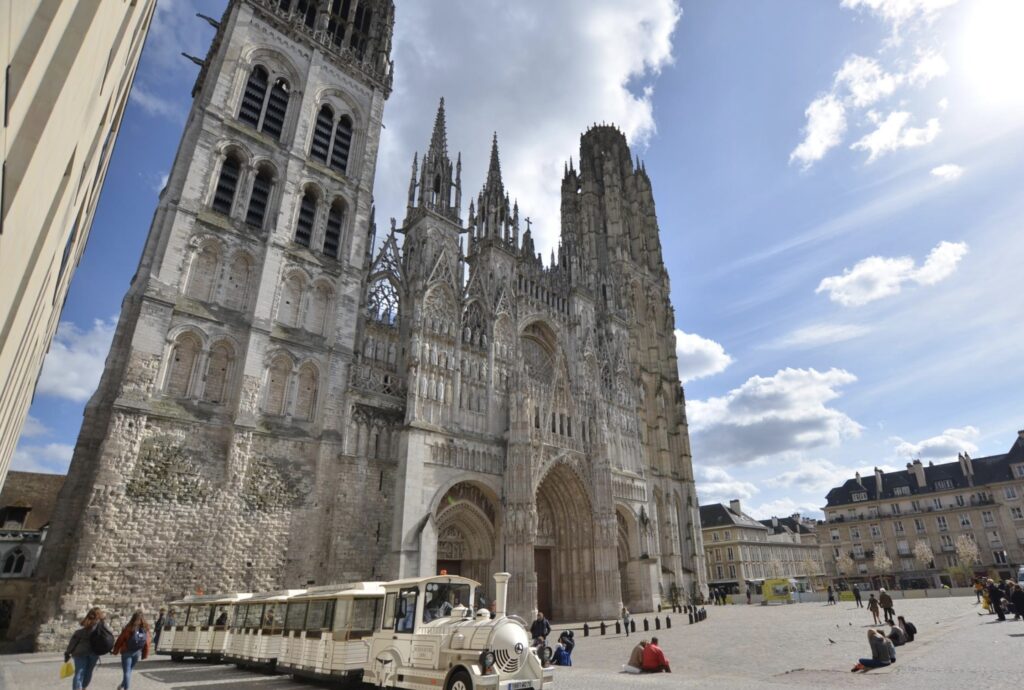
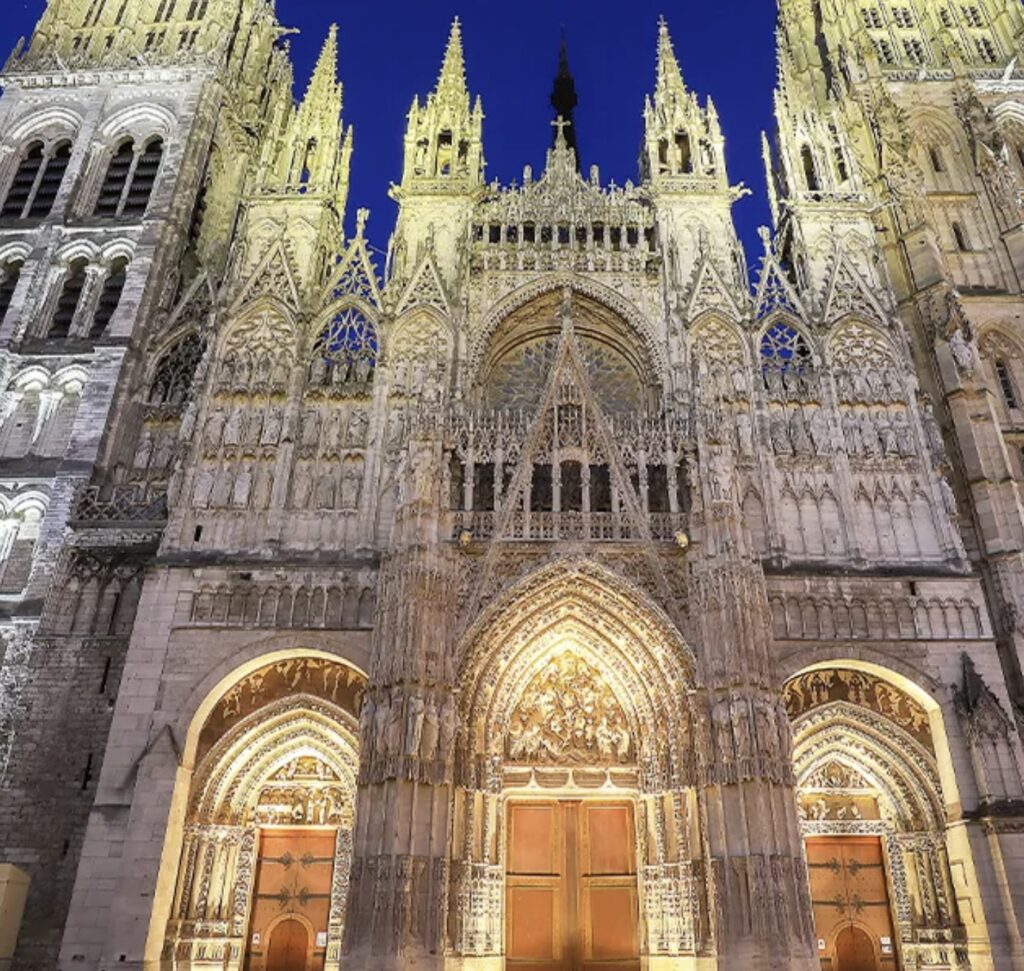
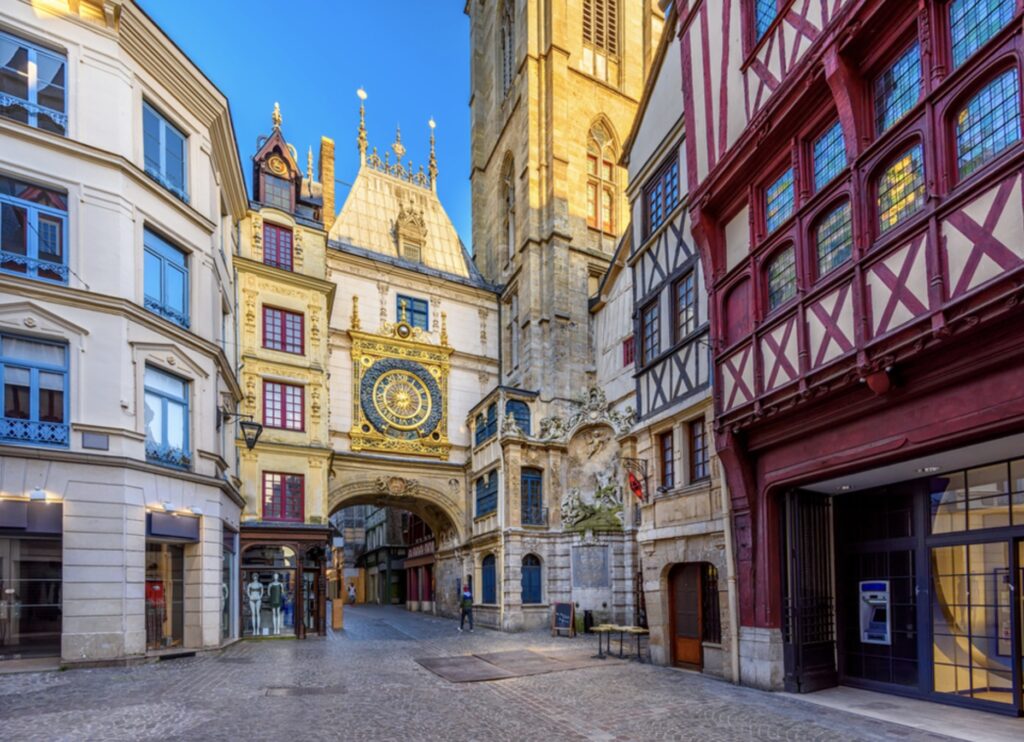
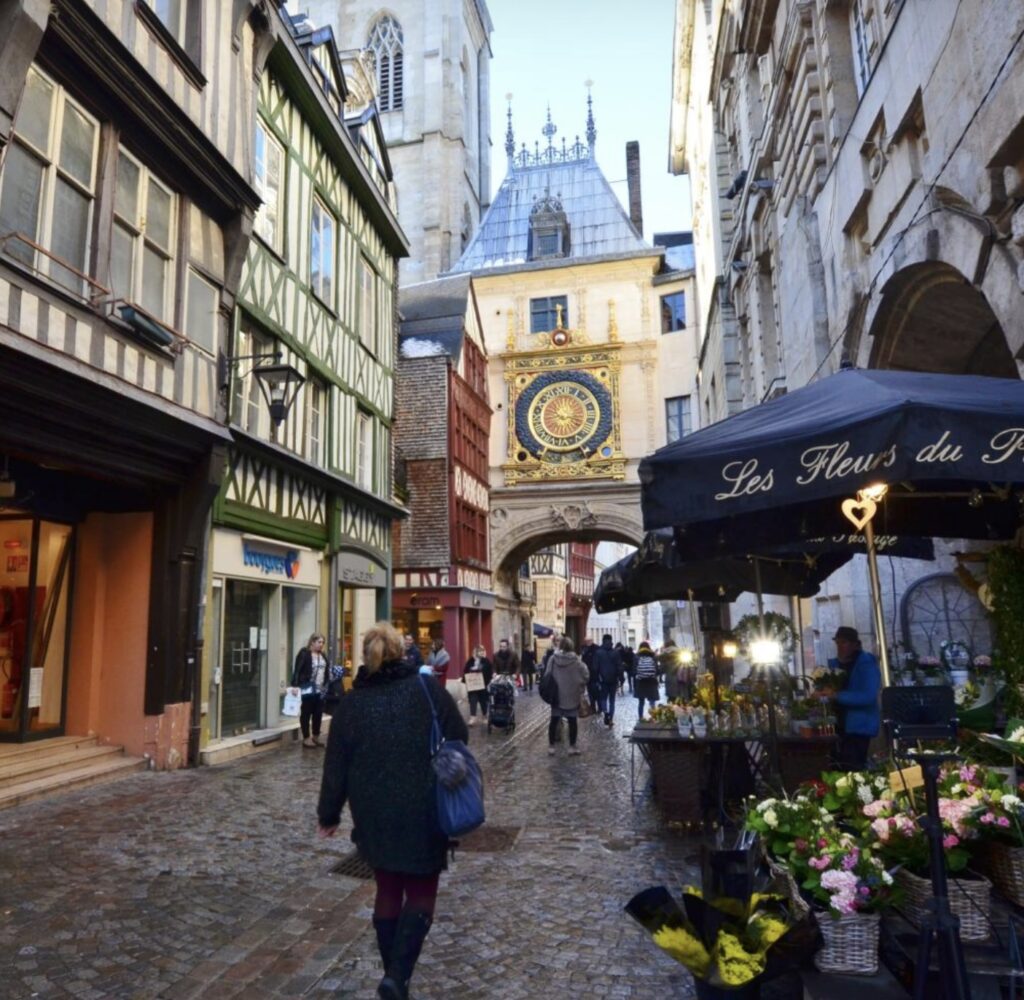
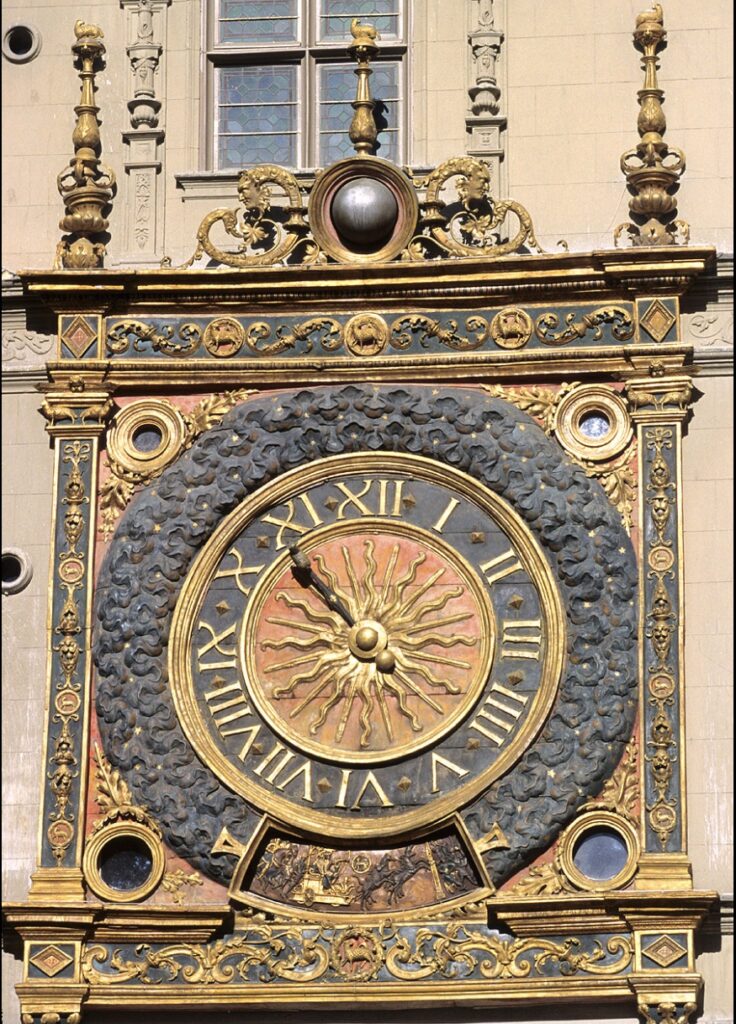
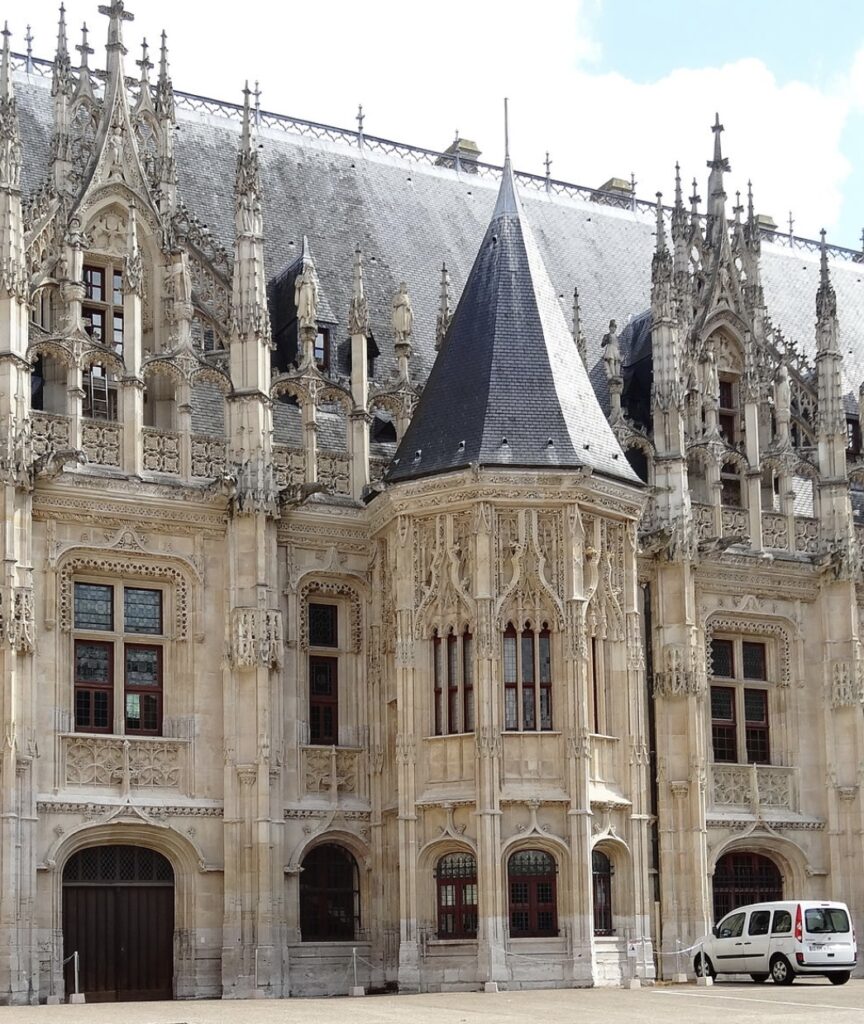
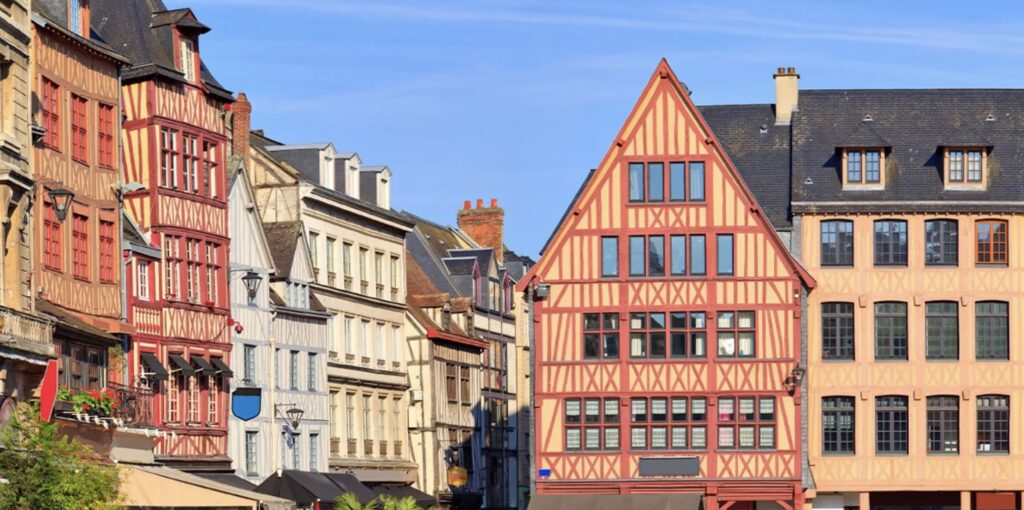
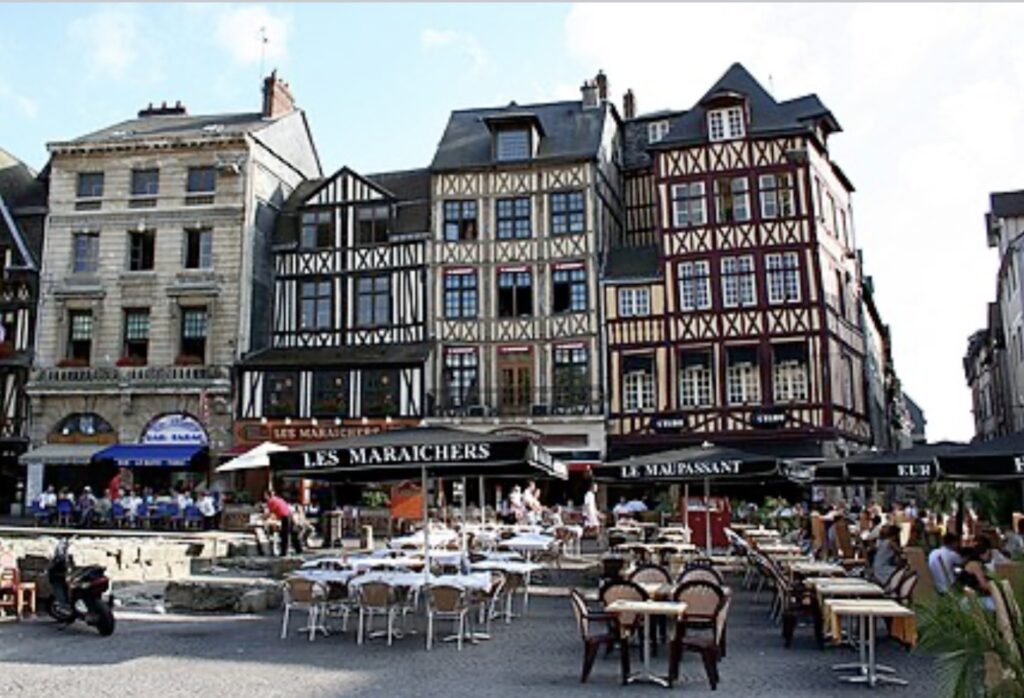
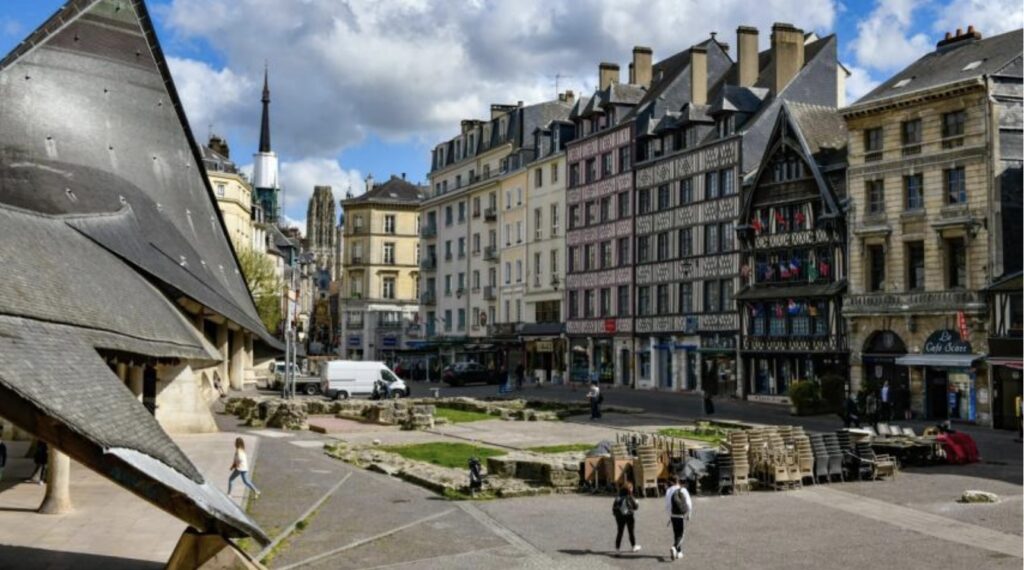
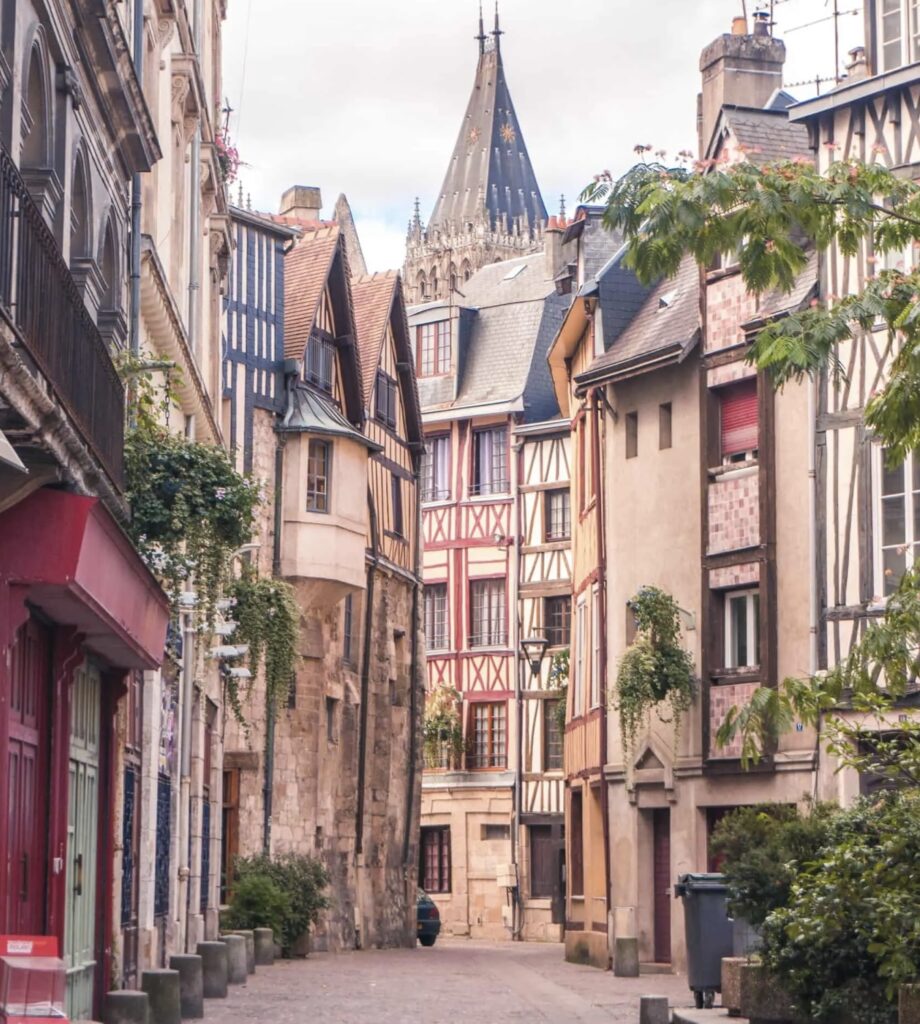
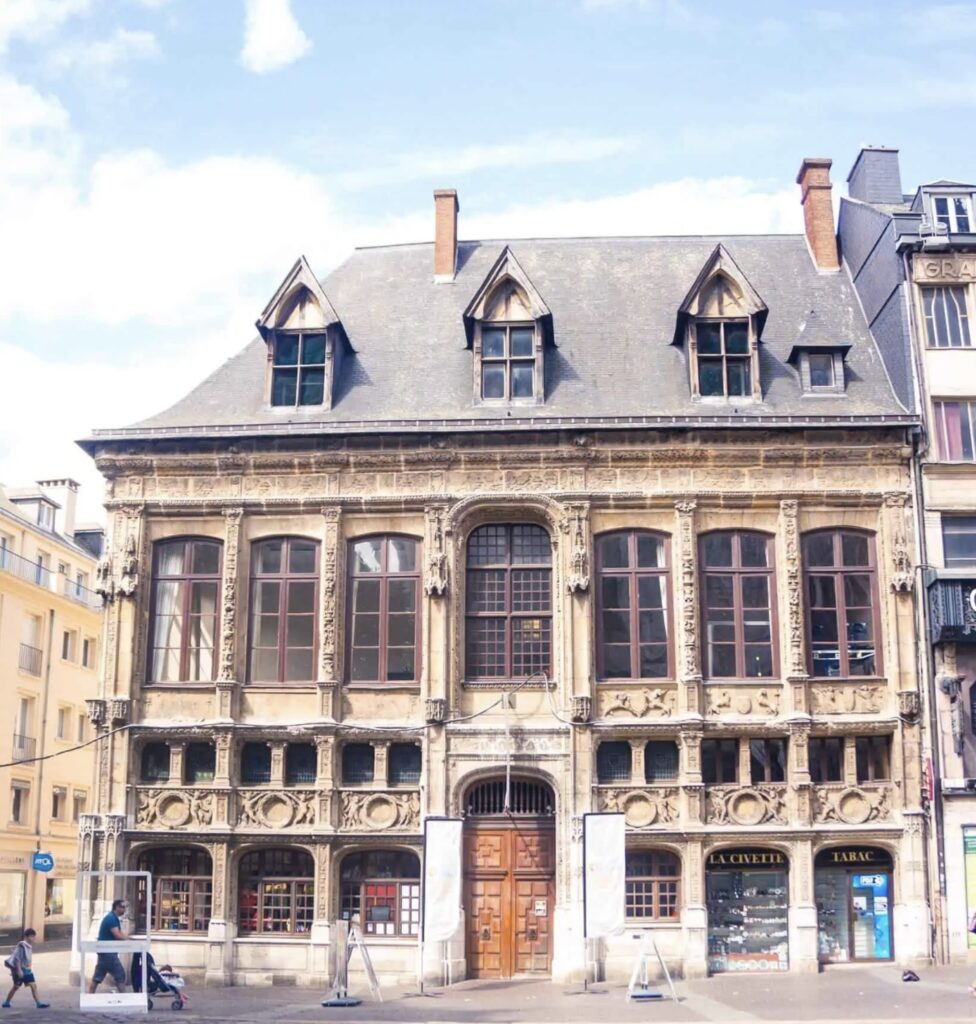
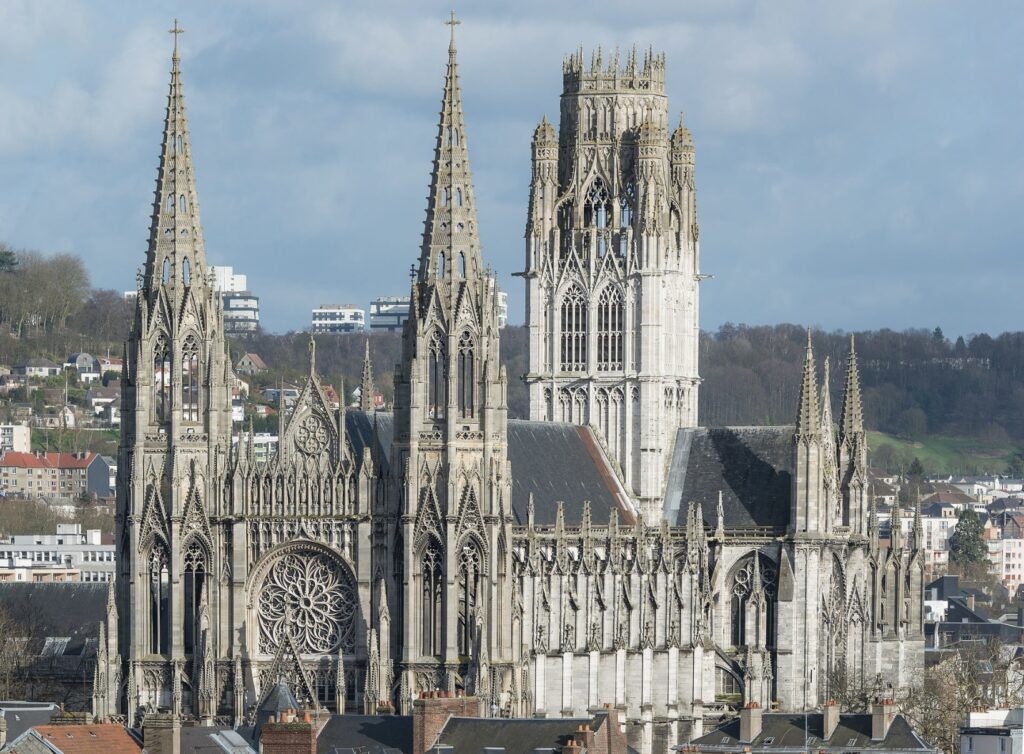
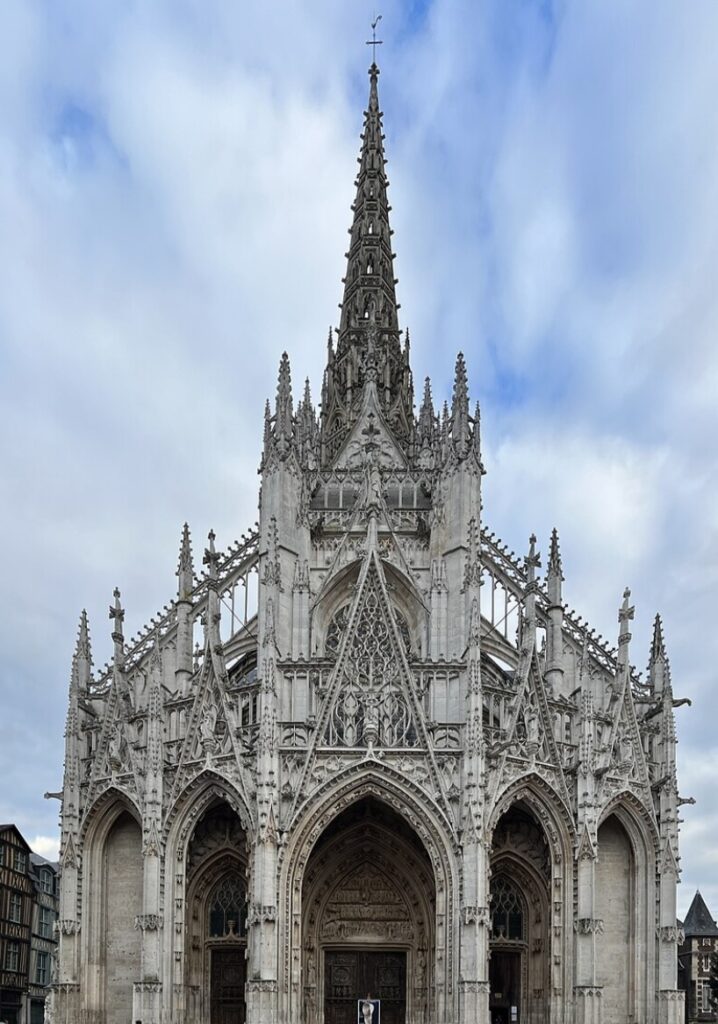
Rouen and the Normandy region are known for several delicious local specialties that reflect the area’s rich culinary heritage. Here are some must-try foods when visiting Rouen:
Local Specialties
- Duck à la Rouennaise (Canard à la Rouennaise)
- This is a traditional dish of duck prepared with a special sauce made from the blood and innards of the bird, often served with a red wine and cognac reduction.
- Normandy Cheeses
- Camembert: A soft, creamy cheese with a strong flavor.
- Neufchâtel: A heart-shaped cheese with a rich, tangy taste.
- Pont-l’Évêque: A square cheese with a pungent aroma and smooth texture.
- Tripes à la Mode de Caen
- A hearty dish made from tripe, traditionally cooked with cider, carrots, onions, leeks, and spices.
- Tarte Tatin
- An upside-down caramelized apple tart that originated in Normandy.
- Apple-based Products
- Cider: Normandy is famous for its apple cider, which is often enjoyed with meals.
- Calvados: An apple brandy that is a popular digestif in the region.
- Andouille de Vire
- A type of sausage made from chitterlings (pork intestines), known for its strong flavor.
- Moules à la Normande
- Mussels cooked with cream, cider, onions, and herbs, reflecting the coastal influence on Normandy cuisine.
- Teurgoule
- A traditional rice pudding flavored with cinnamon, often served as a dessert in Normandy.
Recommended Restaurants in Rouen
- La Couronne: One of the oldest inns in France, famous for its traditional Normandy dishes and historical ambiance.
- Les Nympheas: Offers a variety of Normandy specialties, including seafood and duck dishes.
- La Petite Auberge: Known for its authentic local cuisine and cozy atmosphere.
When visiting Rouen, these local specialties offer a delicious way to experience the region’s culinary traditions.
The Normandie Impressionniste festival is held in Rouen for several significant reasons related to the historical and cultural ties between Rouen, the Normandy region, and the Impressionist movement:
Historical Significance
- Claude Monet and Rouen Cathedral: One of the most compelling reasons is Claude Monet’s series of paintings of the Rouen Cathedral. Monet painted the cathedral at different times of the day and year to capture the changing light, a hallmark of Impressionist art. These paintings are some of the most famous works of the Impressionist movement.
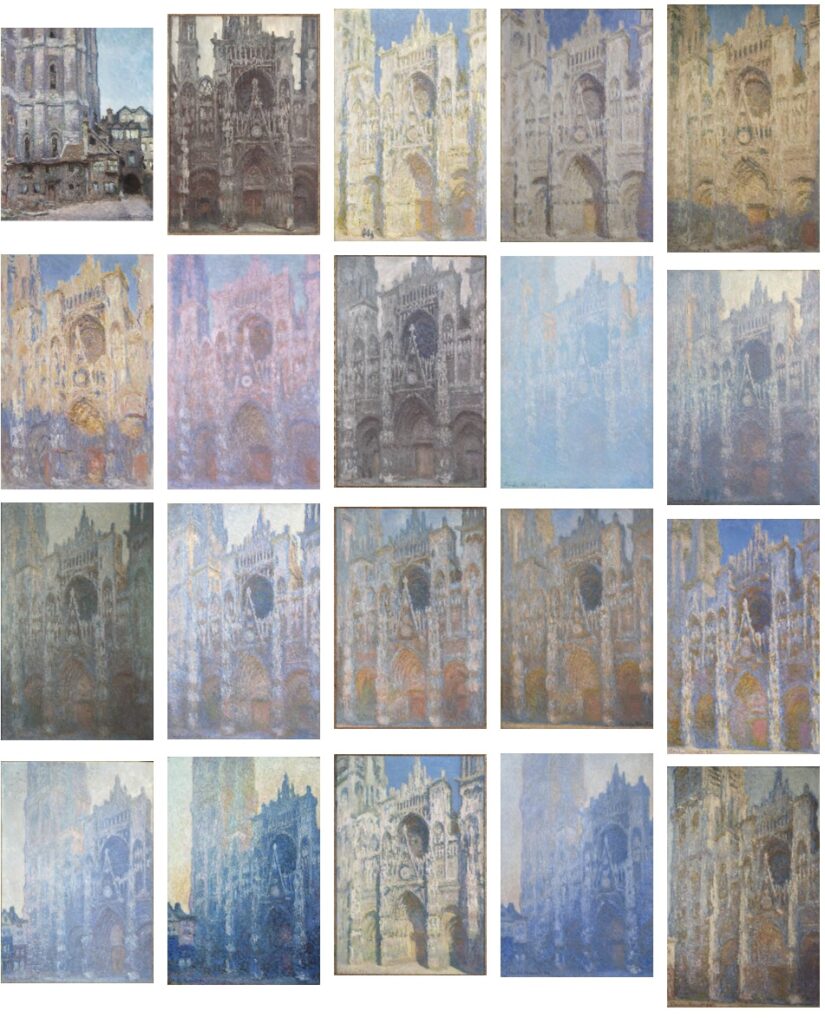
- Normandy as the Birthplace of Impressionism: Normandy is often considered the birthplace of Impressionism. Many of the key figures of the movement, including Monet, Boudin, and Pissarro, lived and worked in Normandy. The region’s landscapes, coastlines, and light provided immense inspiration for their works.
Cultural and Artistic Heritage
- Artistic Legacy: Rouen, along with other parts of Normandy, has a rich artistic legacy that continues to celebrate and promote Impressionism. Hosting the festival in Rouen helps to honor this legacy and maintain its connection to the roots of the movement.
- Museums and Collections: Rouen’s museums, such as the Musée des Beaux-Arts, house significant collections of Impressionist works. These collections provide a natural backdrop and context for the festival, allowing visitors to experience the art in the region where it was created.
Location and Atmosphere
- Scenic Beauty: The picturesque landscapes of Rouen and the surrounding Normandy region offer the perfect setting for a festival celebrating Impressionism. The interplay of light and scenery in this region aligns with the themes and techniques of the Impressionist artists.
- Tourism and Accessibility: Rouen is a central and accessible location within Normandy, making it a convenient and attractive destination for tourists and art enthusiasts. The festival draws visitors to the city, boosting local tourism and economy.
Promotion of Local Culture
- Cultural Events: Hosting the Normandie Impressionniste festival in Rouen allows for a variety of cultural events, including exhibitions, performances, and workshops, that celebrate not only Impressionism but also the broader cultural heritage of Normandy.
By hosting the Normandie Impressionniste festival, Rouen reinforces its historical and cultural connections to the Impressionist movement, while also promoting the region’s artistic heritage and attracting visitors from around the world.
Here’s a suggested one-day walking route to explore the key attractions of Rouen:
Morning
- Rouen Cathedral (Cathédrale Notre-Dame de Rouen)
- Start your day at the iconic Rouen Cathedral. Spend time admiring its stunning Gothic architecture and exploring the interior, including the tomb of Richard the Lionheart.
- Address: Place de la Cathédrale, 76000 Rouen
- Gros Horloge
- Walk a short distance to the Gros Horloge, the famous astronomical clock. Climb up to enjoy panoramic views of the city.
- Address: Rue du Gros Horloge, 76000 Rouen
- Place du Vieux-Marché
- Continue to the historic Place du Vieux-Marché, where Joan of Arc was burned at the stake. Visit the modern Church of Saint Joan of Arc and take in the lively atmosphere of the square.
- Address: Place du Vieux-Marché, 76000 Rouen
Midday
- Historial Jeanne d’Arc
- Head to the Historial Jeanne d’Arc, an interactive museum dedicated to Joan of Arc’s life and trial.
- Address: 7 Rue Saint-Romain, 76000 Rouen
- Lunch
- Enjoy a leisurely lunch at one of the many restaurants or cafes in the Place du Vieux-Marché area. Try some local specialties like Normandy cheeses, apple tart, or a galette.
Afternoon
- Church of Saint-Maclou
- After lunch, walk to the Church of Saint-Maclou, a masterpiece of Flamboyant Gothic architecture.
- Address: Place Barthélémy, 76000 Rouen
- Aître Saint-Maclou
- Just a short walk from the church, visit the Aître Saint-Maclou, a former plague cemetery with intriguing macabre carvings.
- Address: 186 Rue Martainville, 76000 Rouen
- Church of Saint-Ouen
- Continue to the Church of Saint-Ouen, another magnificent Gothic structure with beautiful stained glass windows.
- Address: Place du Général de Gaulle, 76000 Rouen
Late Afternoon
- Museum of Fine Arts (Musée des Beaux-Arts)
- Spend the late afternoon exploring the Museum of Fine Arts, which houses an impressive collection of paintings, sculptures, and decorative arts.
- Address: Esplanade Marcel Duchamp, 76000 Rouen
Evening
- Dinner and Evening Stroll
- Conclude your day with dinner at a restaurant in the city center. Afterward, take an evening stroll along the Seine River to enjoy the beautiful views and the illuminated cityscape.
Optional Stops
- Joan of Arc Tower (Tour Jeanne d’Arc)
- If time permits, visit the Joan of Arc Tower to learn more about her imprisonment and trial.
- Address: 102 Rue Jeanne d’Arc, 76000 Rouen
This walking route covers the major highlights of Rouen, offering a mix of historical, cultural, and architectural experiences.
